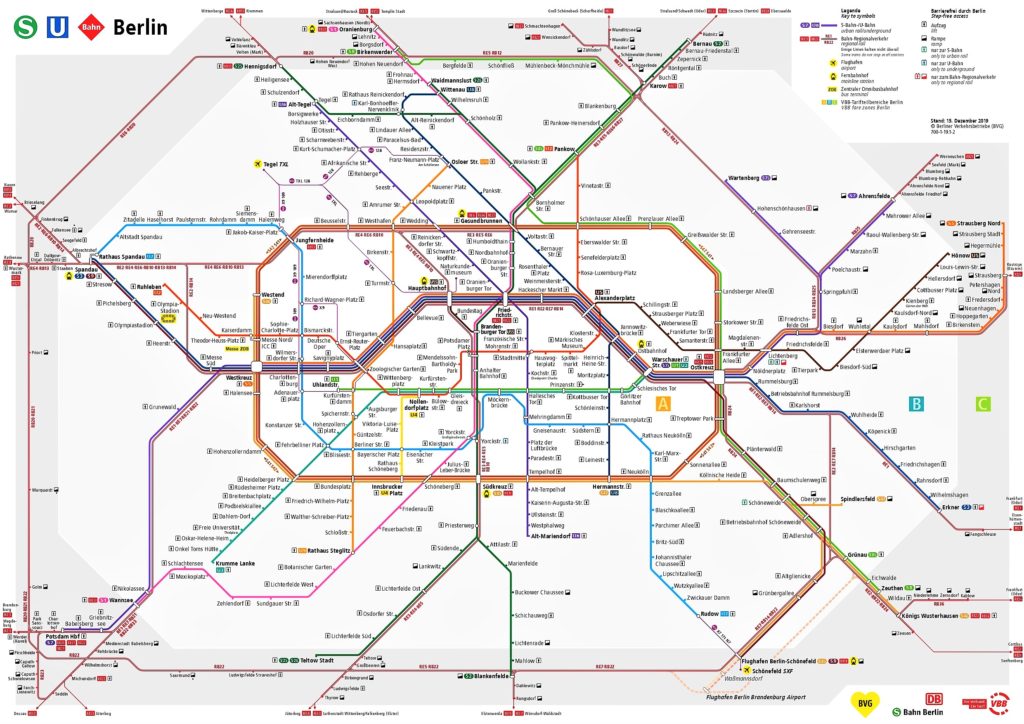The S-Bahn crisis in 2009
It was ten years ago and most of my Berlin friends still have vivid memories of it: The great S-Bahn crisis in Berlin. In a very short time, three-quarters of all trains had to be taken out of service; for several months, eight of the 16 lines in Berlin were only partially served, and 19 of the 166 stations were not served at all. It took several years before train services could be resumed to the usual and required extent. Today it is unimaginable for me that there is not a single train going between Alexanderplatz and Bahnhof Zoo for 20 days.
In many German cities, such as Munich or Berlin, the S-Bahn is operated separately from the rest of the public transport system. Usually, the operator is the Deutsche Bahn, which also took over the operation of the S-Bahn in Berlin after the reunification of the city in the beginning of the 1990s. Following the transformation of Deutsche Bahn into a public limited company, the Berlin S-Bahn was to make a profit by the 2000s at the latest, which could only be achieved by a significant reduction in investment and workshop staff.
Several accidents were caused by the lack of maintenance or by the aging of the trains’ materials, but it was not until the breaking of a wheel disc in May 2009 that it became clear that the trains needed much more maintenance. It was then, when the S-Bahn crisis was born and led to a rethinking among the responsible actors. For example, it was first considered to put the operation of the S-Bahn network out to public tender.
One of the largest tenders in the history of public transport
That’s how it happened. The Berlin S-Bahn network was divided into three parts for the tenders that had been decided upon: the S-Bahn ring and the south/east connection, the north/south connections, and the east/west connections. In 2013 the tender procedure for the future operator of the S-Bahn Ring and the South-East connection was launched. At the end of 2015, the procedure was finally concluded and Deutsche Bahn was the only remaining bidder to be awarded the contract to operate the above-mentioned sections from 2017.
But not all of it was good news, the bidding procedure was criticized for being too specific and for excluding possible smaller competitors by tendering the operation of the route sections only as one package. The Berlin Senate itself, which is responsible for the tender procedure, was also critical, as the intention was actually to allow a change from the previous monopoly status of Deutsche Bahn and not to exclude.
As a result, after several lengthy debates, the Berlin Senate agreed on a new tender procedure for the remaining sections of the route, which will be launched before the end of this month. In this instance, the operations of the north/south and east/west connections will not be put out to tender completely, but rather separately in train delivery and maintenance as well as in the operation. This means that there will be a total of four individual tenders in one package. The contracts, which are to start from 2027, will have a term of 15 years for operation and 30 years for maintenance. The Berlin Senate hopes that the duration of the contracts, which cannot legally be extended, will provide the maximum quality guarantee for the trains.
Investments in billions
Today, at least, there are more variables, either that several companies win the bids, or that the whole operation remains in one hand as before. Besides, It seems certain this time that there will not be just one applicant, because the investments promised by the Berlin Senate and the State of Brandenburg, which is also connected to the Berlin S-Bahn network, amount to several billion euros. A total of five billion euros will be invested in the operation of the trains and another 2.8 billion euros in maintenance.
The tender for train delivery and maintenance also includes a guaranteed order for 1,308 new trains, and even 2,160 if the routes are extended accordingly. It also defines the characteristics that the trains must have, for example, they must be air-conditioned and have large barrier-free multi-purpose compartments so that passengers with wheelchairs, luggage, strollers, or bicycles have sufficient space. Drink holders, sockets for laptops, and wireless mobile phone charging stations are also being discussed. Undoubtedly, a tender with this scope will not only find one interested party in the end, especially since it is international.
Sustainable mobility not only means researching new drives or advanced means of transportation, but also continuously improving our existing means of transport. The Berlin S-Bahn transports over a million people every day, it has to constantly develop and remain one of the first options for the residents of the German capital to make them leave their car at home.
